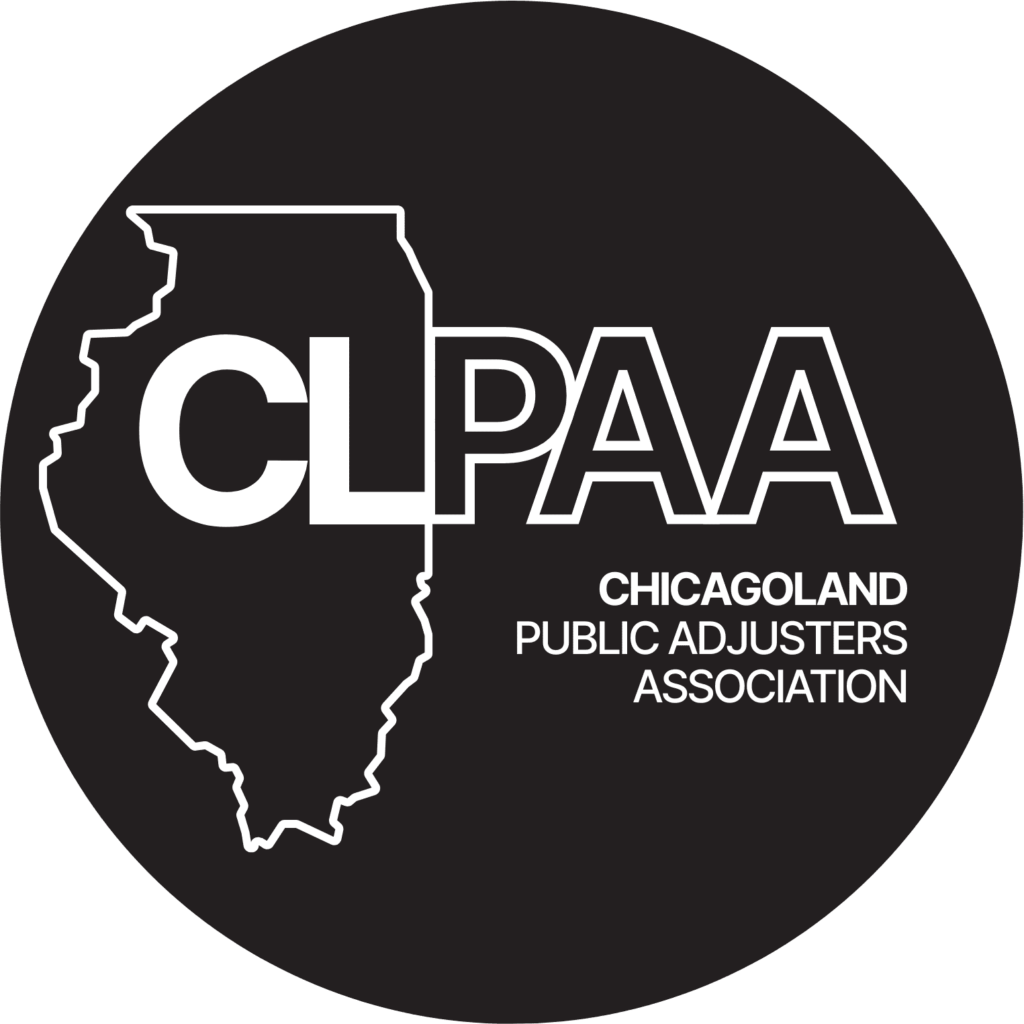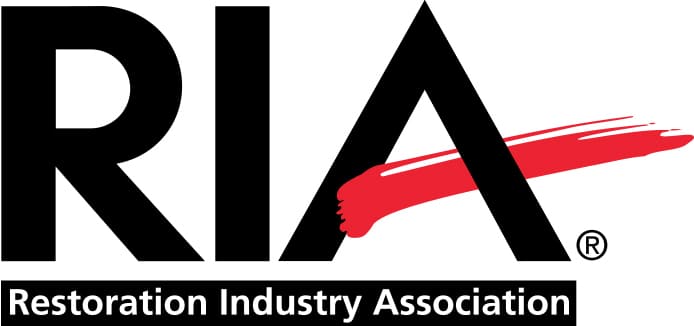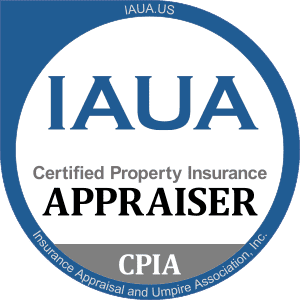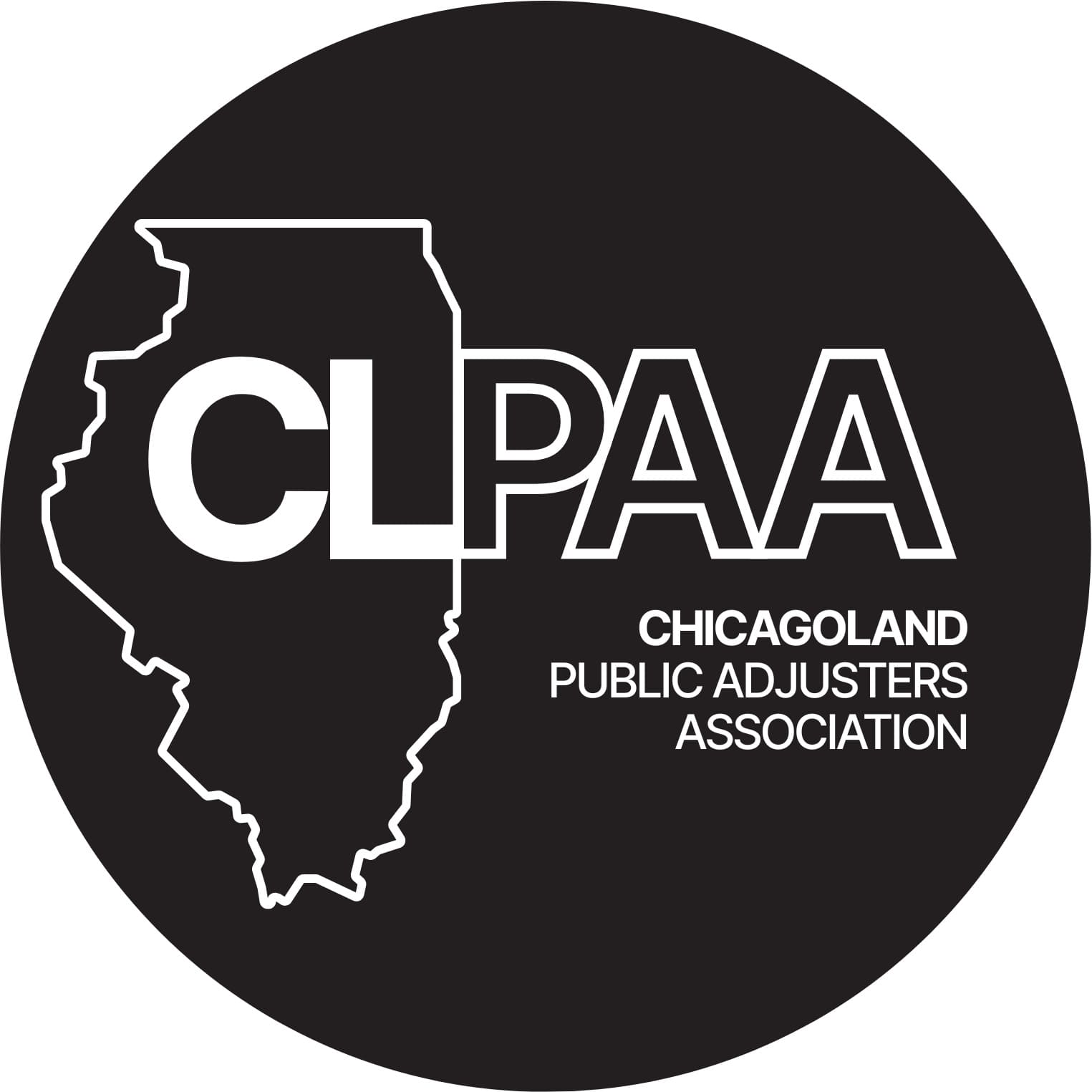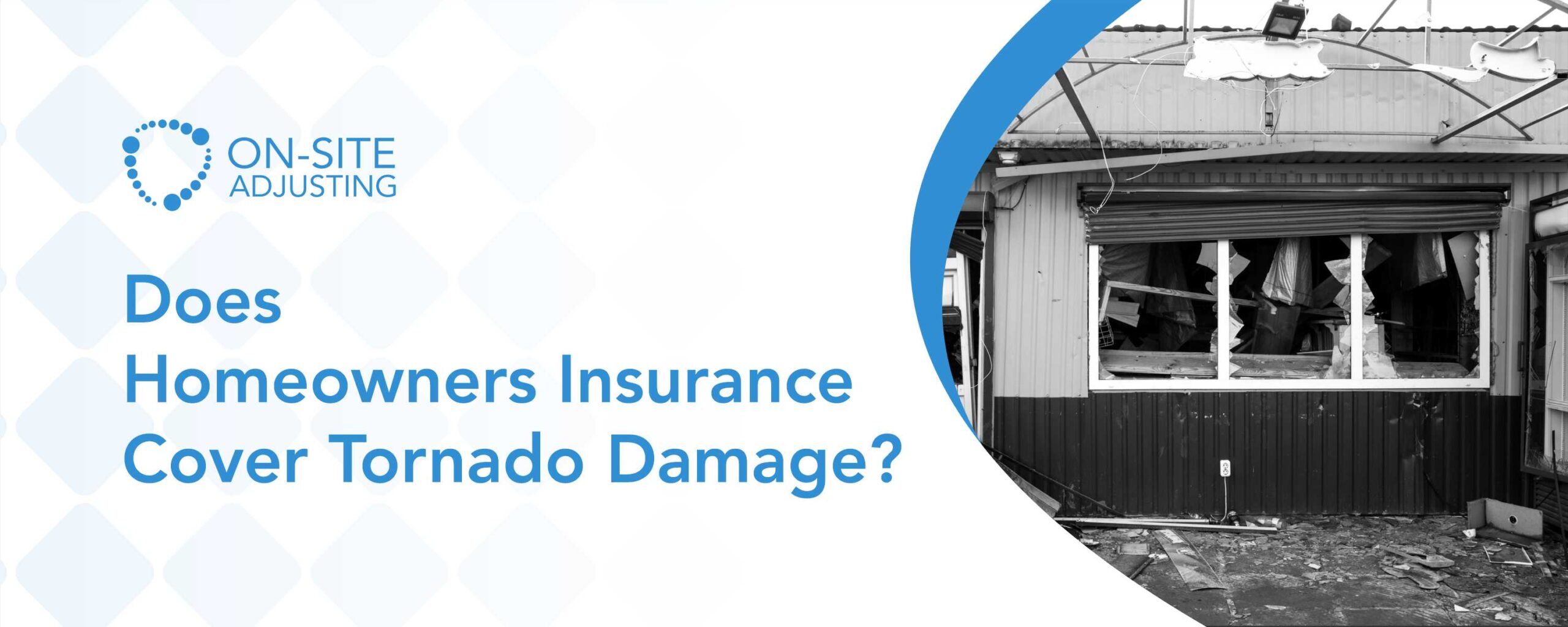
The United States has experienced over 1,000 confirmed tornadoes this year alone. Tornadoes are one of the most destructive natural disasters, known for causing widespread damage in a matter of minutes. They often uproot trees, tear off roofs, and demolish homes.
For homeowners, understanding the extent of their insurance coverage is crucial. This is especially so when facing such a devastating event. To fully understand your insurance coverage, speaking to a public adjuster is best. Public adjusters are masters of insurance policy who can help you navigate the claims process with ease. Schedule a call with one before filing your claim to maximize your claim.
In this blog post, we will explore what tornado damage entails and whether homeowners insurance typically covers these damages. We will also examine the types of insurance policies that offer tornado protection. Finally, we will detail the steps to take after a tornado has damaged your home.
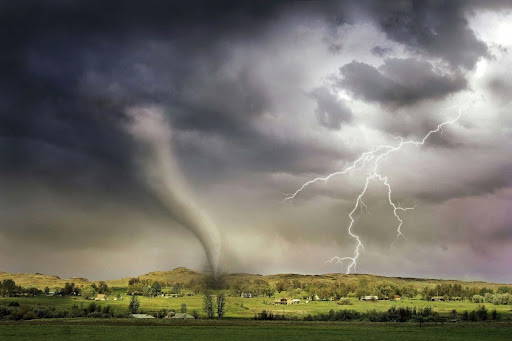
What Is Tornado Damage?
Tornado damage is the destruction caused by the high-speed winds of a tornado. The winds can range in severity depending on the intensity of the storm. Tornadoes are categorized on the Enhanced Fujita (EF) Scale which ranks them from EF0 to EF5. Wind speeds and the resulting damage determine a tornado’s ranking. An EF0 tornado might cause minor damage, such as broken branches or damaged roofs. However, an EF5 tornado can flatten entire neighborhoods, reducing houses to rubble.
There are also several types of tornado damage ranging from wind to debris impact. The high speeds during tornadoes can propel debris which then destroys properties and causes injuries. Furthermore, because tornadoes often occur during thunderstorms, properties are at risk of water damage.
Feeling stuck with your claim? You don’t have to fight alone.
Reach out to us — we will review your claim for free and help you understand your options
Negative Effects of Tornadoes
Tornadoes don’t just cause physical damage—they also wreak emotional, financial, and environmental havoc. Here are some of the most significant negative effects of tornadoes:
Property Damage
Tornadoes can completely devastate homes and buildings, leaving families displaced. The cost to repair or rebuild a home after a tornado can be astronomical. This is especially so in severe cases where structural damage is extensive. Even homes that remain standing may suffer from significant damage to windows, roofs, and interiors.
Moreover, tornado damage is not limited to the home itself. Vehicles, personal belongings, and outdoor structures like sheds or garages are also at risk. This wide-ranging damage can leave homeowners scrambling to assess the total cost of recovery.
Injuries and Fatalities
Tornadoes are life-threatening events. High winds and flying debris pose serious risks to anyone in the tornado’s path. Injuries from broken glass, falling objects, and structural collapses are common. Sadly, tornadoes can also be fatal, particularly when they occur with little warning or in heavily populated areas.
The emotional toll of these injuries and deaths can be immense. Families often have to grieve loved ones or deal with long-term disabilities from injuries.
Financial Strain
Even with insurance coverage, homeowners may face financial challenges after a tornado. The cost of temporary housing, repairs, and replacing personal belongings can add up quickly. Additionally, if the home requires significant repairs or needs to be rebuilt, the insurance payout may not cover all expenses. This is usually because the homeowner had insufficient coverage or high deductibles.
In regions prone to tornadoes, insurance premiums may also rise as insurers try to offset the increased risk. This adds another layer of financial strain for homeowners, particularly in areas like the Midwest or Southern Plains.
Disruption of Daily Life
After a tornado, life rarely returns to normal quickly. Homes become uninhabitable, forcing families to stay in hotels or with relatives. Schools, businesses, and public services are often disrupted. Thus, it is difficult for people to resume their everyday lives. Power outages, damaged roads, and destroyed infrastructure further exacerbate the difficulties of recovery.
This disruption can last weeks, months, or even years in the case of severe tornadoes. This adds stress to the already overwhelming task of rebuilding.
Environmental Impact
Tornadoes also take a toll on the environment. Uprooted trees, destroyed wildlife habitats, and the spread of debris over large areas can harm ecosystems. Tornadoes can also lead to soil erosion, especially when they occur in rural or agricultural areas. The environmental damage, while secondary to the human impact, can still have long-lasting effects on the affected region.
Does Homeowners Insurance Cover Tornado Damage?
The good news for homeowners is that most standard homeowners insurance policies do cover tornado damage. Tornadoes are generally classified under “windstorms,” and windstorm damage is typically included in homeowners insurance. Therefore, if a tornado destroys parts of your home, your insurance policy should help pay for repairs or rebuilding.
However, the specifics of what your policy covers may depend on several factors, including:
Policy Type
Most comprehensive homeowners insurance policies (HO-3 or HO-5) provide coverage for tornado damage. However, the damage has to stem directly from the storm’s high winds or flying debris. Note that basic policies (HO-1 or HO-2) may have more limited coverage. Thus, it’s important to check whether your policy includes windstorm coverage.
Exclusions and Limits
While homeowners insurance typically covers wind damage from tornadoes, your policy may contain exclusions or limits. For example, policies often exclude flood damage that is a by-product of a tornado. However, a separate flood insurance policy gives you cover. Additionally, if you live in a high-risk tornado area, some insurers may impose higher deductibles for wind damage. They may also limit your coverage.
Replacement vs. Actual Cash Value
It’s also important to understand whether your policy covers replacement costs or actual cash value. Replacement cost value reimburses you for the cost of repairing or rebuilding your home at current market prices. Actual cash value, on the other hand, takes depreciation into account. This means that if your policy covers actual cash value, you may receive a lower payout for older parts of your home or belongings.
In summary, most homeowners insurance policies cover tornado damage. Nonetheless, you should review your policy to understand exclusions, limits, or conditions. If you live in a tornado-prone area, you should consider additional coverage to ensure you are fully protected.
What Kinds of Home Insurance Cover Tornado Damage?

Several types of homeowners insurance policies offer protection against tornado damage. Here’s a closer look at the most common options:
Standard Homeowners Insurance (HO-3)
HO-3 is the most common type of homeowners insurance policy in the United States. It provides broad coverage for most types of damage, including tornadoes, under the “windstorm” peril. This policy typically covers damage to the home’s structure, as well as personal belongings inside the home.
HO-3 policies also offer liability coverage. This covers legal expenses if someone suffers injuries on your property during a tornado. Additionally, these policies often cover additional living expenses if you need to get temporary housing while they restore your home.
Dwelling Insurance (HO-1 and HO-2)
HO-1 and HO-2 policies offer more limited coverage compared to HO-3. However, many of these policies still cover tornado damage, as long as they list windstorms as a covered peril. The main difference between HO-1 and HO-2 is that HO-2 offers slightly broader coverage. Therefore, it protects against additional perils such as hail, fire, and lightning.
These policies may be less expensive than HO-3, but they also provide less comprehensive coverage. Homeowners with these policies should review them carefully to ensure they cover tornadoes. They should also consider upgrading to more extensive coverage if necessary.
Comprehensive Insurance (HO-5)
HO-5 policies offer the most extensive coverage available. It protects against all risks except those specifically excluded in the policy. This means that HO-5 policies generally do not require proof that a windstorm caused the damage. HO-5 policies also tend to offer higher limits and more generous payouts than other types of homeowners insurance.
For homeowners in tornado-prone areas, HO-5 policies can provide peace of mind as it offers the most robust protection.
Renters Insurance (HO-4)
Renters insurance (HO-4) doesn’t cover the structure of the home itself, but it does cover personal belongings inside the rental unit. If a tornado damages your apartment or rental home, renters insurance can help pay for the cost of replacing damaged items such as furniture, electronics, and clothing. Like homeowners insurance, renters insurance typically covers windstorm damage which includes tornadoes.
Renters insurance policies also offer liability coverage and may cover additional living expenses.
Condo Insurance (HO-6)
Condo insurance (HO-6) covers damage to the interior of your condo unit, as well as personal belongings. If a tornado damages the building’s exterior, the condo association’s master policy will generally cover those repairs. However, your HO-6 policy will cover any damage inside your unit. Like other homeowners insurance policies, HO-6 typically includes windstorm coverage. Therefore, tornadoes are usually covered.
What To Do After Tornado Damage

If a tornado damages your home, taking immediate action is essential to ensure your safety. It also facilitates the insurance claim process. Here are the steps you should take:
Ensure Safety First
Before worrying about your home or belongings, make sure you and your family are safe. Tornadoes can cause structural damage that may not be immediately visible. Therefore, you should avoid entering your home until local authorities have declared it safe. Be cautious of hazards like downed power lines, gas leaks, and sharp debris.
Hire a Public Adjuster
A public adjuster is the best way to have a successful insurance claim. Once you are safe after the tornado, you will need to file a claim for repair costs. Providing documentation and evidence can be difficult to do when you are distraught. Therefore, a public adjuster can provide you with ease and clarity during a difficult time.
Document the Damage
Once it’s safe to do so, thoroughly document the damage to your home and property. Take photos and videos of all affected areas. This should include the exterior, interior, and any damaged personal belongings. This evidence will be invaluable when filing an insurance claim. Additionally, your public adjuster can handle the documentation on your behalf. If you are paying for a service, utilize it.
Contact Your Insurance Company
As soon as possible, notify your insurance company about the damage. Most insurers have a claims hotline or app where you can report the damage and begin the claims process. The insurer will send their adjuster to assess the damage and estimate the cost of repairs.
Make Temporary Repairs
Sometimes, tornados leave your home exposed to the elements. In this scenario, you should make temporary repairs to mitigate further damage. For example, you can cover broken windows with plastic sheeting. You can also use a tarp to cover missing sections of the roof. However, avoid making permanent repairs until the insurance adjuster has evaluated the damage. This could complicate your claim.
Keep Receipts and Records
Save all receipts for any repairs, temporary lodging, or replacement items. Your homeowners insurance policy may reimburse you for these expenses under the “additional living expenses” coverage. It’s also helpful to keep detailed records of any conversations with your insurance company. This will help you to track the progress of your claim.
Conclusion
Tornadoes can cause severe and sudden destruction, but homeowners insurance can provide crucial protection. Most standard policies cover tornado-related damage. Nevertheless, understanding the specifics of your policy is key to avoiding any surprises. By being proactive after tornado damage occurs, you can recover from one of nature’s most powerful forces. Lastly, remember to seek professional help from the beginning of your claim. This will help you have a smoother claims process.
Tornado damage claims are no joke and having a reputable public adjuster can put you at ease. On-Site Adjusting has a team of expert adjusters who will maximize your claim and take some weight off your shoulders. Schedule a free consultation with us today.

